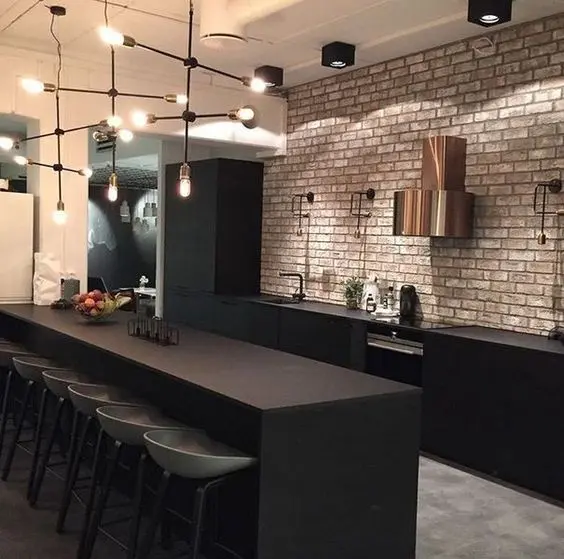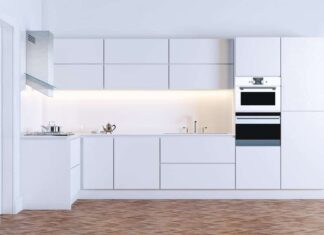We’ve heard about minimalism & maximalism, but what exactly do they mean? We have encountered a strange occurrence in interior design trends where polar opposite styles are popular at the same time. Both “minimalist” sleek and “maximalist” chic are in vogue, recognizing that individuals have varying tastes.
Let’s first define minimalist and maximalist:
Minimalist interior design focuses on a sparing amount of furniture and details, allowing space to be prominent in the room. It’s meant to be practical, but not so austere that you have a living room with one rocking chair.
Maximalist interior design focuses on mixing patterns, colors, and textures to make a room feel lavish and personalized. It can seem chaotic to some, but there is a cohesive intentional look to maximalism that makes it charming.
While these two styles are trending, they are more like personality types than aesthetics. While minimalism started as an art movement in the 1960s, maximalism started as a reaction to maximalism in the 1970s.
What are the main differences between minimalism & maximalism interior design styles?
Creating a relaxing atmosphere

A home is a sanctuary for most people and they must be able to unwind. If you want several things around to remind you of joy or tactile pleasant things, maximalism is more your style. Comforting things in personal areas is the signature of the maximalism style.
If you feel like having several things around you is more distracting than comforting, then minimalism is best. Minimalism is principled on more space and fewer distractions.
Inviting others into your home

Home is not just a place of solace, but it’s also a place of hospitality. Part of having your own space is knowing that you’ll share that ambiance with other people.
If you want your visitors’ first impressions focused on flow and architecture, minimalism draws more attention to the structure. If you want them to notice your collectibles or wall decors, maximalism embraces more of your personality in your things.
Using your coffee table in your space
 photo: Elle Decor
photo: Elle DecorThe use of surfaces in your room can clue you into which style you like. Maximalists can’t stand the sight of a bare coffee table because it’s not warm or inviting. A bare surface is TOO bare and needs either a tray, magazines or even a small plant on it.
Minimalists want a bare surface because it draws attention to anything on it like paperwork or remote control. If the coffee table is free of clutter, it adds to the harmony of the room.
The primary use of storage

When visiting a local home furnishing store like Ikea, you may need an addition to the room. If you need more structures in the room, then you are likely thinking of function like a minimalist. But if you are more drawn to accents that fit your creativity, then you will want to indulge like a maximalist.
One thing that maximalists and minimalists agree on is that storage is important for their aesthetic to work. Minimalists use storage as a foundation to make the room look clean, which means more cabinets with sparse hardware. They will use far more storage with doors and drawers to keep the room looking tidy. For minimalists, this is the golden rule: “There’s a place for everything and everything has a place.”
Maximalists need storage for items that don’t add to the aesthetics of the room. They will use storage as a place for necessities that can’t be displayed or don’t work with their taste.
Contemporary versus Vintage Styles
Minimalism is a very modern idea and those who embrace it are looking for more space and clarity. Maximalism is best paired with a vintage look where you want to show off many of your collections and inspirations. It is possible to enjoy antiques and use space to focus on them and make them stand out. However, items from similar eras resonate off one another and can thrive better in collections.
Color

With minimalism and maximalism, you can decorate with any kind of color palette. However, neutral palettes work well with minimalism because the lack of saturated colors emphasizes the brightness of the space. Bold colors are more staple in the maximalism style because they draw the eyes to particular features.
Your personal creative process
 photo: Pinterest
photo: PinterestYour creative process is important to figure out which styles suit you best. If a blank canvas helps you get the look you want, minimalism is at least a good place to start. Starting from scratch and adding the things you want to the room until it is complete is a tenet of minimalism.
However, some people like using an existing template and modifying parts until it feels cohesive to them. A maximalist is more likely to use that method to decorate their homes.
Also, consider how you acquire more items for your room. It’s not only about creating a room as a canvas but how you maintain and develop that interior.
When visiting a local home furnishing store like Ikea, you may need an addition to the room. If you need more structures in the room, then you are likely thinking of function like a minimalist. But if you are more drawn to accents that fit your creativity, then you will want to indulge like a maximalist.
Conclusion
Each of these styles can sometimes be more personality traits, not just design aesthetics.
Minimalists see their homes as places where they seek calm like a sanctuary. They want to highlight the natural features of the house like the architecture. They are more likely to emphasize the quality of the furniture to make a statement.
Maximalists see their homes as an extension of themselves. They want to be surrounded by all the things that bring them joy, whether nostalgic or comfortable. They do not see groups of things like clutter, but collections of things that they love.





